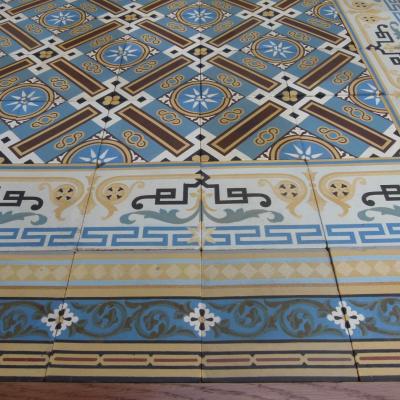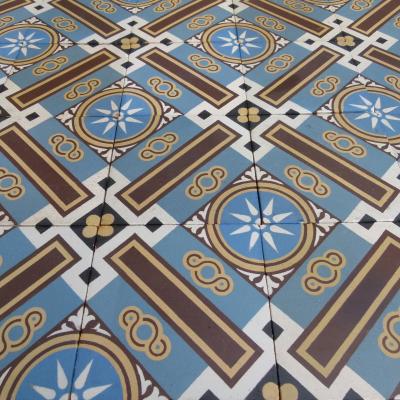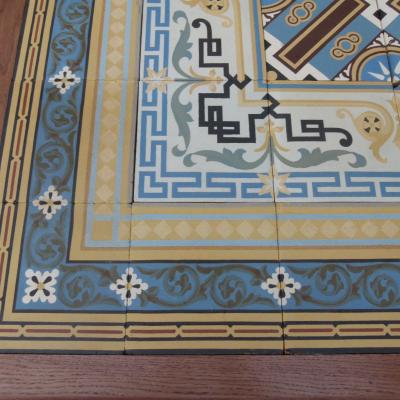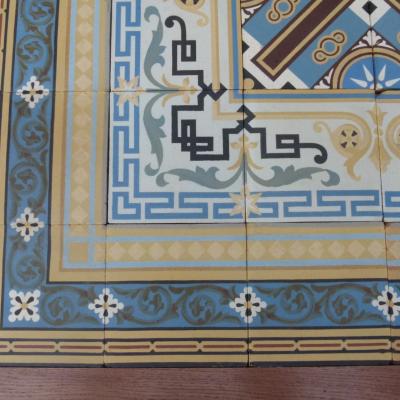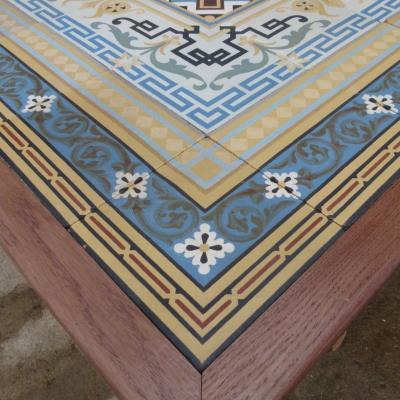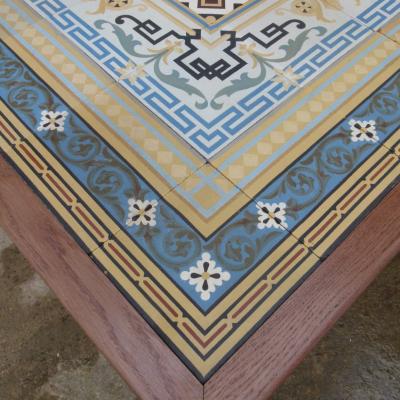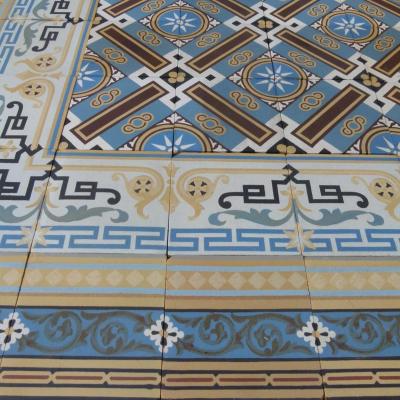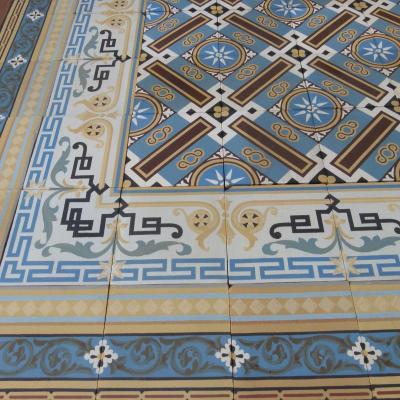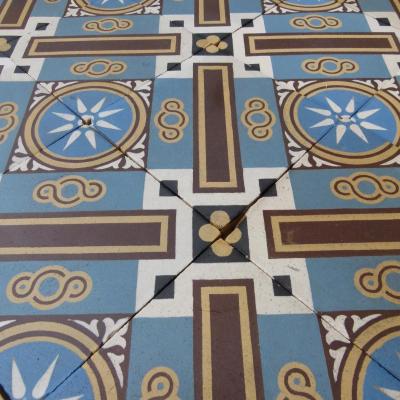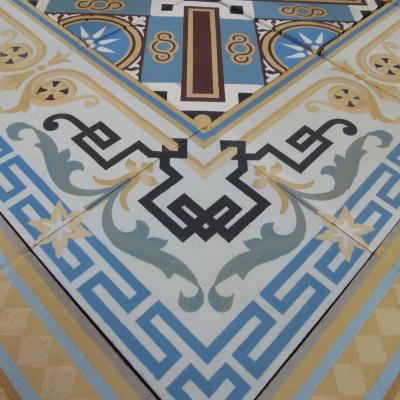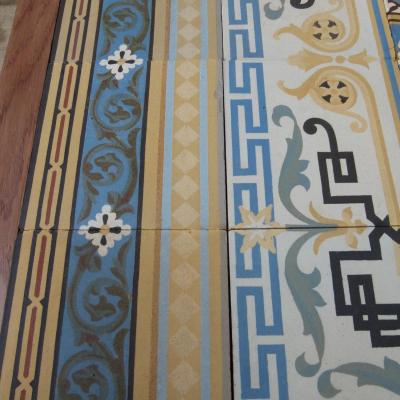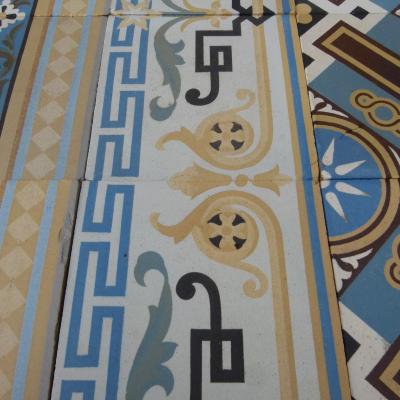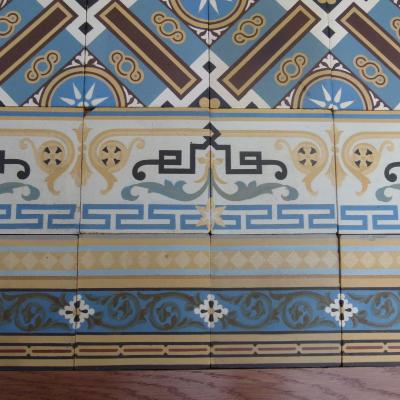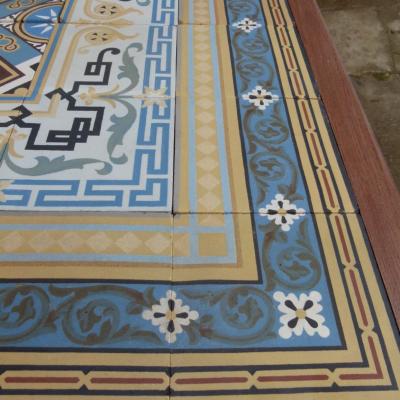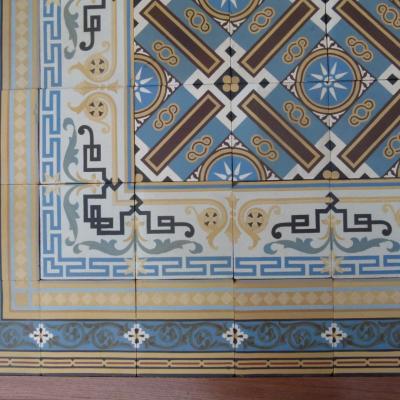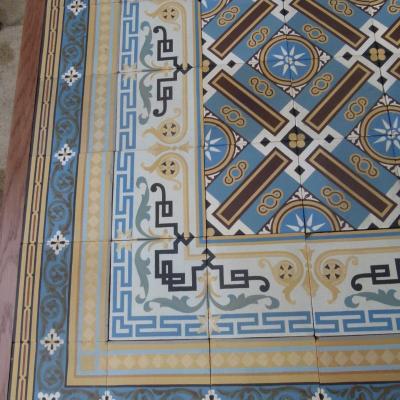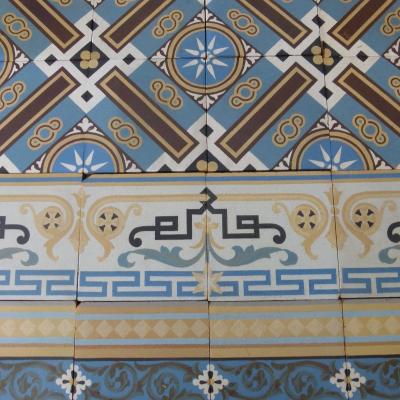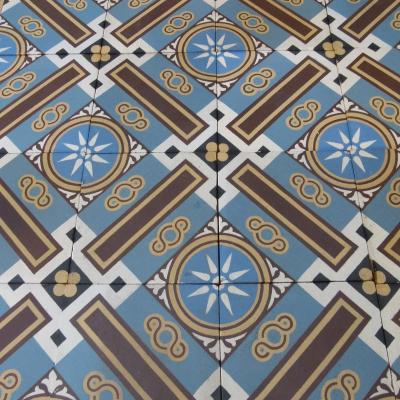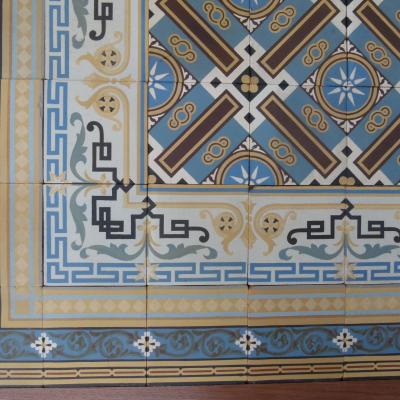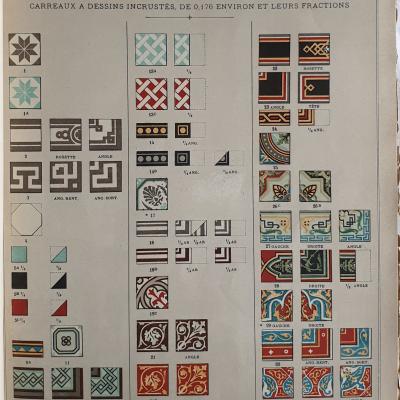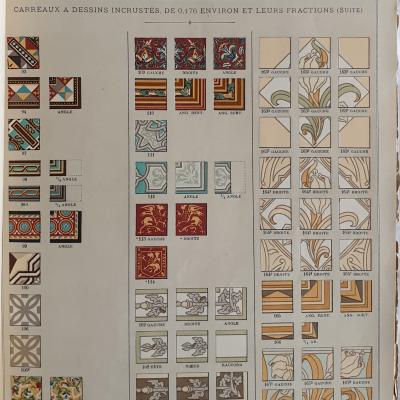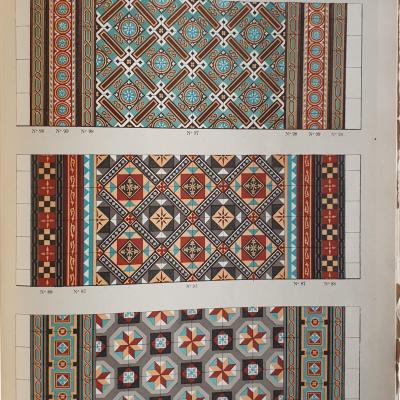c.16.75m2 - The magnificence of the Belle Epoque..
This floor isn’t just a decorative surface; it’s a testament to the industrial artistry of the Belle Époque, a period in France (roughly 1871–1914) marked by optimism, innovation, and a flourishing of the decorative arts. At its heart is Paul Charnoz, a chemist-turned-ceramist who founded his factory in Paray-le-Monial in 1877 having learned his craft at the internationally acredited ceramicists, Boch Freres. Charnoz pioneered a technique of inlaying coloured powders into ceramic tiles using intricate stencils and partitions—a method that produced richly detailed, enduring designs. His work earned gold medals at the Universal Exhibitions of 1889 and 1900, placing him among the elite of French decorative arts.
The floor we have reclaimed and restored—c.16.75 m² / 180 sq ft. of superb hand-pressed, weighty tiles—is a rare survivor of that golden age. Its geometric tessellations and lush vegetal borders are not merely ornamental; they reflect the era’s fascination with symmetry, nature, and the fusion of art and industry. The double-framed border speaks to a level of design sophistication that was both technically demanding and visually indulgent; the inner same size border consists of two separate tiles, one left and one right facing, itself adorned by an outer complimentary same size border. The floor is complete as all four border corner tiles have been reclaimed for both series.
This was a time when even utilitarian objects were imbued with beauty. Decorative ceramics like these were part of a broader aesthetic movement that included Art Nouveau and the rise of the applied arts. They adorned the homes of the bourgeoisie, the lobbies of grand hotels, and the salons of the culturally ambitious. To walk across such a floor was to tread on a canvas of civic pride and artistic ambition.
Today, with the original factory long closed and much of its output lost or dispersed, a complete and restored floor like this is more than a collectible—it’s a fragment of cultural heritage.
The ceramic is excellent on these quality handmade 17.5cm (6.9 inch) square ceramics, which weigh well over a 1 kilo / (2.2lbs) each. In excellent condition, some tiles display small chips and edge nibbles, commensurate with their age, all groutable and adding to the charm and antique patina of this rare ceramic.
There is a museum in Paray-le-Monial, Burgundy dedicated to preserving the history and heritage of these unique ceramics. Their website is linked here
Tile quantities by tile type:-
Field – 400 tiles - 12.25m2 / 132 sq ft.
Outer large border– 68 tiles plus 4 corners - 2.2m2 / 12.6 linear metres / 41.3 linear ft.
Inner large border* – right facing – 37 tiles - 1.2m2 / 6.8 linear metres / 22.4 linear ft.
Inner large border* – left facing – 37 tiles - 1.2m2 / 6.8 linear metres / 22.4 linear ft.
*plus their four border corners
plus c.1m2 of free tile rejects for the tiler to use as offcuts
NOTE
Antique tiles were most commonly made in single or two tile moulds. Before current computer automation methods their moulds were made my hand and the colour slips mixed by eye. Kiln temperatures could also be variable, as could the firing time. The result is that often tiles display subtle size and thickness variations and there can be tonal variations in colours, owing to the slip mixing and/or firing time. All of this makes these handmade tiles unique and adds to their charm. Some floors display their subtle variations in size and tones, some not, but when photographing we always take a random section of the floor so that it is representative of the whole. A tiler should always dry lay a section of the tiles to familiarise himself with them before starting to fix lay.
CE288



